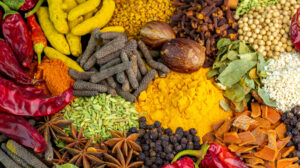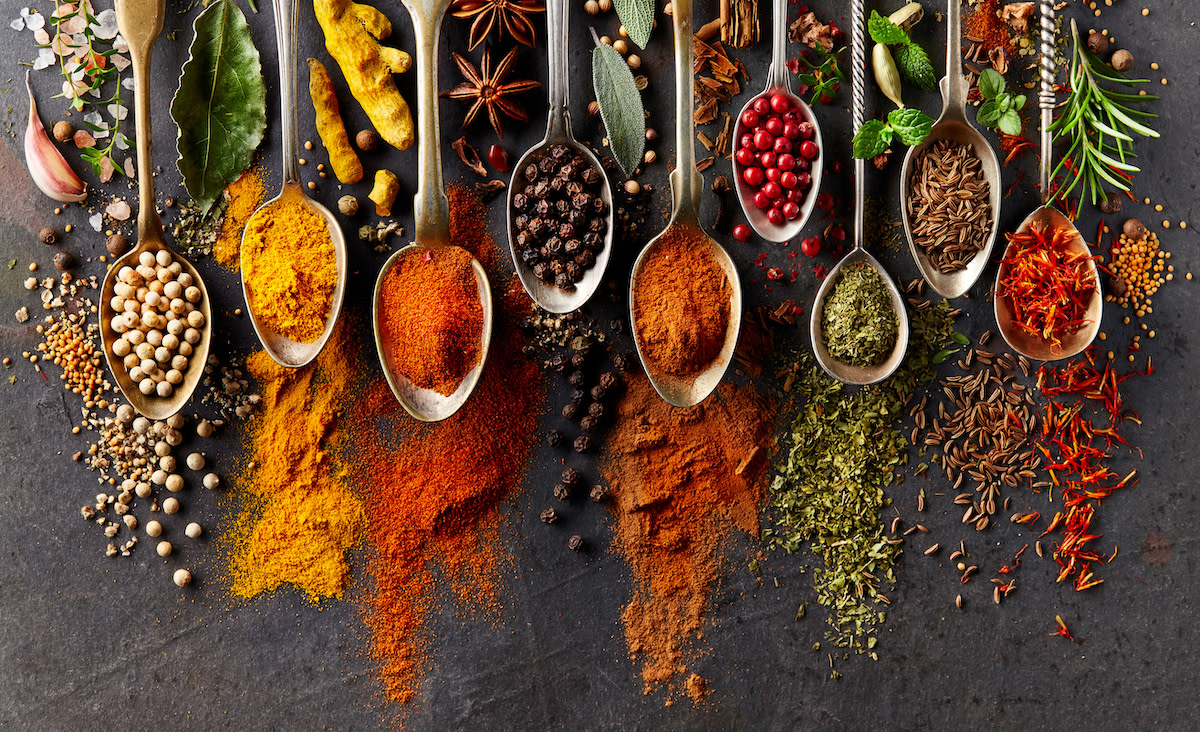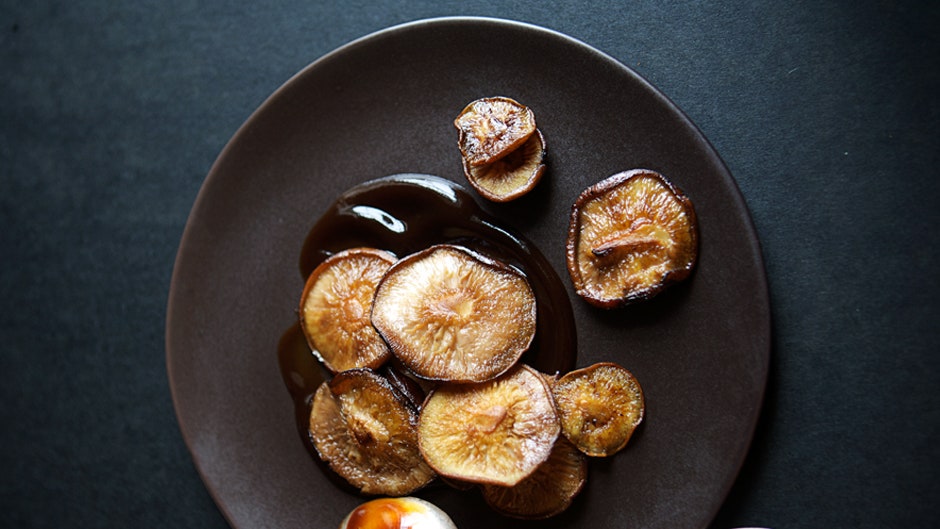The Spice Odyssey: Exploring Global Culinary Flavors
The world is a tapestry of diverse cultures, and one of the most delightful ways to explore this diversity is through the lens of culinary exploration. Each culture contributes its unique blend of spices and flavors, creating a sensory adventure for those willing to embark on the journey. From the fiery chilies of Mexico to the aromatic spices of India, our palates can traverse the globe, sampling a rich array of tastes that tell the stories of centuries-old culinary traditions.
A Symphony of Spices in Indian Cuisine

India, with its kaleidoscope of flavors, stands out as a true spice haven. Indian cuisine is a mesmerizing blend of aromatic spices like cardamom, cumin, and coriander, creating a sensory experience that is both bold and nuanced. From the iconic curry dishes to the street food delights, every bite tells a story of ancient trade routes and cultural exchanges. The burst of flavors in Indian dishes is not just a culinary experience; it’s a journey through the history and geography of a subcontinent that has mastered the art of using spices.
In Indian kitchens, spices are not mere ingredients; they are storytellers, weaving tales of the land’s diversity. The use of spices varies from region to region, showcasing the subtleties of local ingredients and culinary traditions. A single dish can carry the legacy of generations, connecting the present to the past in a symphony of tastes that captivates the senses.
Latin America: The Spicy Rhythms of Tradition
Latin American cuisine is a celebration of vibrant flavors, where spices play a crucial role in creating the distinctive taste profiles that define each dish. From the zesty heat of Mexican salsas to the savory richness of Brazilian feijoada, the culinary landscape of Latin America is a testament to the region’s cultural richness. The use of spices like cilantro, cayenne, and achiote adds depth and complexity, turning every meal into a fiesta for the taste buds.
In Latin American kitchens, there’s a rhythm to the use of spices – a dance of flavors that mirrors the lively spirit of the people. The burstiness of Latin American cuisine lies not only in the individual dishes but also in the fusion of influences from indigenous cultures, European colonizers, and African traditions. It’s a celebration of diversity on the plate, where every bite is a harmonious blend of history, tradition, and the joy of savoring life.
Asian Fusion: A Culinary Crossroads
Asia, with its vast expanse and diverse cultures, is a treasure trove of culinary delights. From the umami-rich flavors of Japanese cuisine to the bold spices of Thai dishes, Asian fusion represents a convergence of traditions that creates a perplexing yet delightful tapestry of tastes. The burstiness in Asian cooking comes not only from the variety of spices but also from the contrasting textures and cooking techniques that coexist in harmony.
In the heart of Asian cuisine lies the art of balancing sweet, sour, salty, and spicy flavors, creating a symphony that dances across the taste buds. The perplexity arises from the intricate use of ingredients like lemongrass, miso, and tamarind, each contributing its unique essence to the dish. Exploring Asian fusion is like taking a journey through ancient spice routes, where trade and cultural exchanges have left an indelible mark on the culinary landscape.
Mediterranean Melange: Sun-Kissed Flavors
The Mediterranean region, bathed in sunlight and surrounded by the sea, offers a culinary experience that is both refreshing and comforting. From the aromatic herbs of Italy to the bold spices of Morocco, the Mediterranean is a melange of flavors that reflects the diverse landscapes and cultures that call this region home. The burstiness in Mediterranean cuisine is evident in the variety of dishes that range from the simplicity of Greek salads to the complexity of Moroccan tagines. Rent a car in Beograd and drive along the Adriatic coast, enjoying delicious additions to a meal that will certainly make you happy.
In Mediterranean kitchens, spices are used to enhance the natural goodness of fresh, local ingredients. The perplexity comes from the careful balance of herbs and spices, creating a palate-pleasing journey that mirrors the region’s laid-back yet sophisticated lifestyle. Whether it’s the tangy olives of Greece or the saffron-infused paellas of Spain, every bite is a celebration of sun-kissed flavors that transport you to the shores of the Mediterranean. While you are enjoying driving in these areas, don’t forget to install the roadside assistance app so that you don’t have to worry if something breaks down or an accident happens.
Embracing the Sweet and Spicy: Desserts Around the World
As we continue our exploration of global culinary delights, it’s essential to savor the sweet side of the journey. Desserts, often the grand finale of a culinary experience, offer a captivating blend of flavors that can be as diverse as the cultures that create them. From the delicate pastries of France to the exotic sweets of the Middle East, the world of desserts is a realm of perplexity and burstiness that tempts the taste buds with every indulgent bite. Relax in the comfort provided by the luxurious houses in Boca Falls and enjoy some of the delicious desserts from different parts of the world while watching your favorite series or spending a pleasant evening with your loved ones.
In the charming patisseries of France, the burstiness lies in the juxtaposition of light, flaky pastries and rich, velvety creams. The perplexity arises from the meticulous techniques of pastry chefs who transform simple ingredients like butter, flour, and sugar into masterpieces like croissants and éclairs. Each bite is a journey through layers of flavor, showcasing the precision and artistry that define French pastry-making. However, you don’t have to go to France to experience these tantalizing flavors of French desserts, while you’re getting your car serviced at a transmission service in Buffalo, you can stop by a nearby executive French croissant shop.
Venturing eastward, the Middle East presents a treasure trove of desserts that enchant with their exotic sweetness. From the honey-soaked pastries of Baklava to the rosewater-infused delights of Turkish Delight, the burstiness in Middle Eastern sweets comes from the bold use of ingredients like pistachios, dates, and sesame seeds. The perplexity is found in the intricate patterns and shapes that adorn these treats, reflecting the region’s rich cultural heritage. Various companies have joined together through excellent M&A business advisors to create excellent sales chains of such desserts that combine modernity with tradition and are enjoyed by people all over the world.
The Spice Infusion in Beverages
No exploration of global flavors is complete without delving into the world of beverages. From the soothing teas of Asia to the bold coffee traditions of the Middle East, beverages offer a liquid journey through the diverse landscapes of taste. The burstiness in global beverages lies not only in the variety of drinks but also in the rituals and traditions that accompany their preparation and consumption. In different hospitality courses, you can learn a lot more about this by learning about what kind of drink goes with which dish as well as what are the characteristics of different drinks.
In the tea gardens of Asia, the burstiness is evident in the range of flavors that can be coaxed from a humble tea leaf. From the earthy Pu-erh teas of China to the fragrant Darjeeling teas of India, the complexities arise from factors like altitude, climate, and processing techniques. Tea ceremonies, with their meticulous rituals, add an extra layer of burstiness, turning a simple cup of tea into a meditative experience that engages the senses. An internet service provider that manages IT services in San Antonio provides its users with excellent internet with which they can research more about the history and production of teas in China and India.
On the other side of the globe, the Middle East boasts a rich tradition of coffee that goes beyond a mere caffeine fix. The burstiness in Middle Eastern coffee culture comes from the social rituals surrounding the preparation and serving of Arabic coffee. The use of cardamom and other spices adds a layer of perplexity to the rich, dark brew, turning it into a symbol of hospitality and communal connection. Buy a comfortable bikini and enjoy the beauty of Turkish beaches while enjoying a delicious traditionally prepared coffee or tea, along the way you can also try their traditional Turkish ice cream served in a special sweet cone.
The Art of Fermentation: Umami Unleashed

As we dive deeper into the world of culinary exploration, the art of fermentation emerges as a fascinating and often overlooked aspect of global flavors. Fermented foods, from Korean kimchi to German sauerkraut, are a testament to the transformative power of microorganisms. The burstiness in fermented delights lies in the unpredictable nature of the fermentation process, which can result in a symphony of tangy, savory, and umami flavors. No matter how tasty they are, such dishes are often quite salty or have a strong specific taste, so the health clinic in Marietta GA does not recommend patients with chronic diseases to often indulge in these types of dishes, and that if they feel any discomfort or symptoms, they can report to doctor’s examination.
In Korean cuisine, the burstiness of fermentation is epitomized by the iconic kimchi. This spicy, fermented cabbage dish is a staple in Korean households, and its flavors evolve with time, creating a dynamic culinary experience. The perplexity arises from the variety of ingredients used in kimchi, from ginger and garlic to fish sauce and gochujang (red pepper flakes), each contributing to the complex umami profile of the dish. In order to learn the right technique for making kimchi, all you need is practice, and with experience, you will make your own measurements for the recipe to your taste, this is also advised by a science tutor in Boulder who explains to his students how everything can be achieved and perfected with practice and regular study.
Traveling westward, Germany’s sauerkraut showcases a different facet of fermentation. The burstiness here comes from the sour, crunchy cabbage, transformed by lactic acid bacteria. The perplexity lies in the simplicity of the ingredients – cabbage, salt, and time – yet the result is a flavorful condiment that has become synonymous with German cuisine.
Revolutionizing Plant-Based Cuisine
In the contemporary culinary landscape, the rise of plant-based cuisine represents a revolution in flavors that challenge traditional perceptions of food. Bursting onto the scene with innovative techniques and a commitment to sustainability, plant-based dishes are reshaping the way we think about gastronomy. The burstiness in this culinary movement comes not only from the variety of plant-based ingredients but also from the creative ways chefs reimagine classic dishes. Some simple company snacks like sumptuous cheese boards now contain adds like plant-based cheeses or tofu that add flavor.
The perplexity of plant-based cuisine lies in the skillful combination of textures and flavors that mimic the richness of animal products. From jackfruit tacos that emulate the texture of pulled pork to dairy-free ice creams that rival their traditional counterparts, plant-based chefs are pushing the boundaries of taste. The burstiness emerges in the unexpected pairings, such as cauliflower steaks with chimichurri or beetroot burgers with vegan aioli, creating a culinary landscape that surprises and delights. The only thing to keep in mind while you’re in the kitchen making these delicious plant-based alternatives to meat is to wash the vegetables well before use and check your pipes along the way because if there is an accumulation of limescale, they can burst and then call an emergency restoration service in Charlotte that will fix the problem.
Crafting Culinary Narratives: The Role of Storytelling in Food
Beyond the flavors themselves, the culinary world is increasingly recognizing the importance of storytelling in creating memorable dining experiences. Whether it’s the tale of a family recipe passed down through generations or the narrative of a chef’s culinary journey, storytelling adds an extra layer of depth to the dining experience. The burstiness in culinary storytelling comes from the diversity of narratives that intersect at the dining table. Sometimes these are recipes from the time of travelers who traveled on horses with traditional saddle blankets and made such meals from the plants they found.
In Italy, the tradition of “cucina povera” (poor cuisine) tells a story of resourcefulness and creativity born out of necessity. Dishes like pasta e fagioli (pasta and beans) and ribollita (a hearty vegetable soup) originated from humble ingredients but have become symbols of Italian culinary prowess. The perplexity lies in the ability of these simple dishes to transcend their humble origins and become culinary icons celebrated worldwide. In the old books that tell about how ordinary people lived through this medieval period, which is kept in the archives under the access control system from Philadelphia, you can even find some interesting recipes that are simple and very tasty.
In modern gastronomy, chefs often use storytelling to connect diners with the origins of their ingredients. From farm-to-table narratives that highlight local produce to tales of foraging adventures in the wild, the burstiness in these stories adds a layer of authenticity to the dining experience. The perplexity arises from the diverse cultural and personal narratives that converge in the kitchen, creating a rich tapestry of culinary storytelling that goes beyond the plate. Some of the interesting stories are even recorded through some novels, and children can get involved in reading about them through organizations like a Readathon school fundraiser.
The Future of Flavor: Culinary Innovation and Technology

As we look to the future of global flavors, the role of innovation and technology in the culinary world cannot be ignored. Chefs and food scientists are pushing the boundaries of traditional cooking, exploring new techniques, and harnessing technology to create avant-garde dishes that redefine our understanding of taste. The burstiness in culinary innovation comes from the unexpected marriages of science and gastronomy, resulting in dishes that challenge our preconceptions. For such culinary achievements, you will definitely need a well-equipped and airy kitchen, and at the mortgage company in Raleigh NC, you can search for properties that suit your taste.
Molecular gastronomy, with its use of techniques like spherification and foaming, exemplifies the burstiness of modern culinary innovation. Chefs experiment with the textures and forms of ingredients, turning familiar dishes into playful and visually stunning creations. The perplexity arises from the scientific precision required to execute these techniques, adding an intellectual dimension to the sensory experience of dining. In order to try some of the most delicious dishes created by the symbiosis of cuisine and technology, you can rent a car in Beograd, and visit one of the exceptional restaurants that offer dishes of modern cuisine.
In the realm of technology, the use of artificial intelligence in recipe creation and flavor profiling is opening new frontiers in the culinary world. AI algorithms can analyze vast datasets of flavor compounds and suggest novel combinations that chefs might not have considered. This marriage of technology and culinary artistry adds a layer of perplexity, as the boundaries of flavor possibilities expand with the assistance of machines. Colorado Springs SEO companies do an excellent job of promoting young entrepreneurs and businesses that invest in these unexplored and new areas both in the culinary sphere and in other spheres of business, thus providing the necessary advertising to reach as many people as possible to learn about these interesting innovations.
Conclusion
In our exploration of global culinary flavors, we have traversed continents, delved into diverse cuisines, and embraced the multifaceted nature of taste. From the fiery spices of India to the umami-rich delights of fermentation, each culinary tradition tells a story that goes beyond the ingredients on the plate. The burstiness and perplexity in global flavors are not just sensory experiences but gateways to understanding the rich tapestry of human culture and history. Homeschooling tutors in Bettendorf explain history to their students as they prepare for tests and finals through this interesting way of food and dish origins.
As we continue to push the boundaries of culinary exploration, embracing the sweet and spicy, indulging in global beverages, and navigating the complexities of fermentation, we discover that the world of flavors is ever-evolving. Plant-based cuisine challenges conventions, storytelling adds depth to dining experiences, and culinary innovation propelled by technology opens new dimensions of taste. Through Google ads, you can certainly get more information on this topic and even research some recipes that you find delicious, but if your Google ads are suspended, first contact a professional who will fix your problem.
In the ceaseless quest for new tastes and textures, we find that the world of food is not static but a dynamic canvas where traditions, creativity, and innovation converge. It is a tapestry woven with the threads of ancient recipes, modern interpretations, and the stories that accompany each dish. As we savor the global symphony of flavors, let us celebrate the burstiness and perplexity that make every culinary journey a voyage of discovery and delight.



